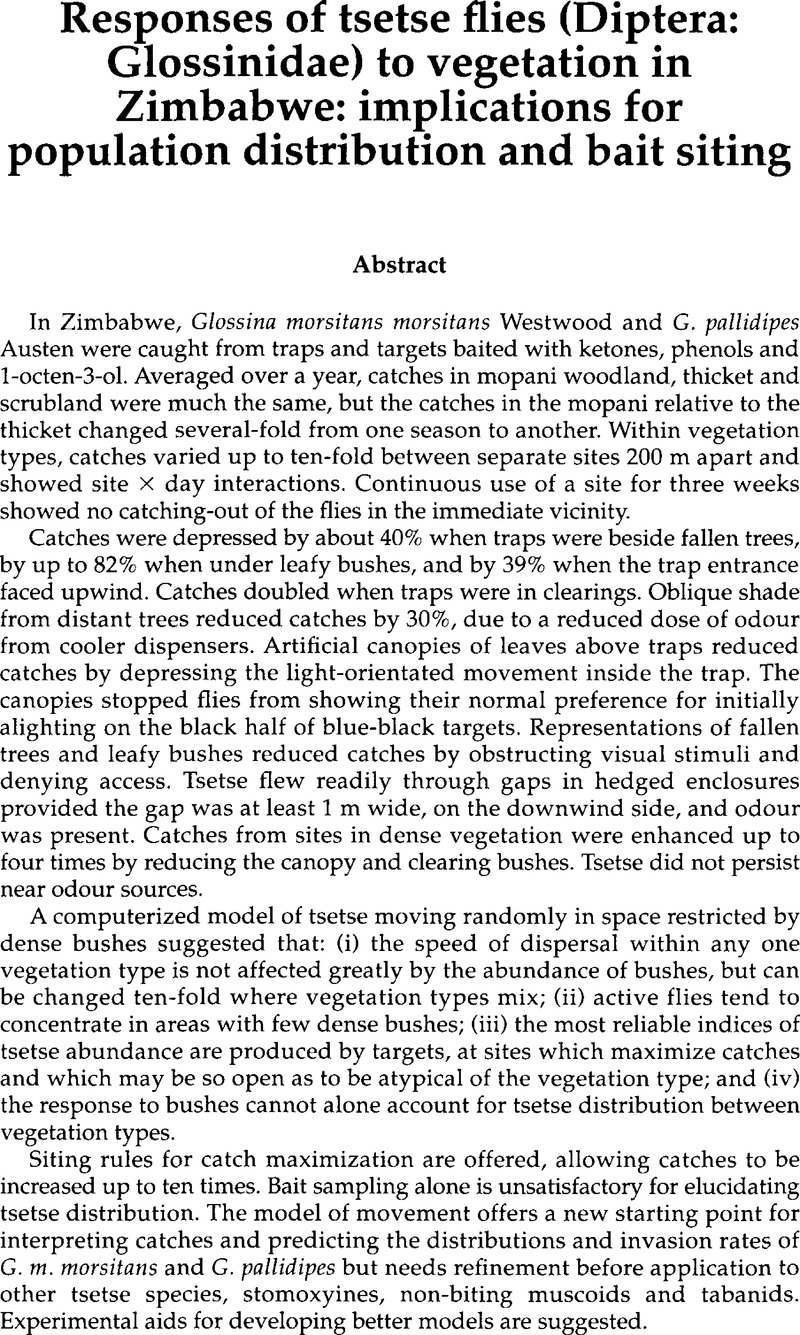Crossref Citations
This article has been cited by the following publications. This list is generated based on data provided by Crossref.
Baldacchino, Frédéric
Desquesnes, Marc
Mihok, Steve
Foil, Lane D.
Duvallet, Gérard
and
Jittapalapong, Sathaporn
2014.
Tabanids: Neglected subjects of research, but important vectors of disease agents!.
Infection, Genetics and Evolution,
Vol. 28,
Issue. ,
p.
596.
Shereni, William
Anderson, Neil E.
Nyakupinda, Learnmore
and
Cecchi, Giuliano
2016.
Spatial distribution and trypanosome infection of tsetse flies in the sleeping sickness focus of Zimbabwe in Hurungwe District.
Parasites & Vectors,
Vol. 9,
Issue. 1,
Ngonyoka, Anibariki
Gwakisa, Paul S.
Estes, Anna B.
Nnko, Happiness J.
Hudson, Peter J.
and
Cattadori, Isabella M.
2017.
Variation of tsetse fly abundance in relation to habitat and host presence in the Maasai Steppe, Tanzania.
Journal of Vector Ecology,
Vol. 42,
Issue. 1,
p.
34.
Gashururu, Richard S.
Githigia, Samuel M.
Gasana, Methode N.
Habimana, Richard
Maingi, Ndichu
Cecchi, Giuliano
Paone, Massimo
Zhao, Weining
Masiga, Daniel K.
and
Gashumba, James
2021.
An update on the distribution of Glossina (tsetse flies) at the wildlife-human-livestock interface of Akagera National Park, Rwanda.
Parasites & Vectors,
Vol. 14,
Issue. 1,
Shereni, William
Neves, Luis
Argilés, Rafael
Nyakupinda, Learnmore
and
Cecchi, Giuliano
2021.
An atlas of tsetse and animal African trypanosomiasis in Zimbabwe.
Parasites & Vectors,
Vol. 14,
Issue. 1,



